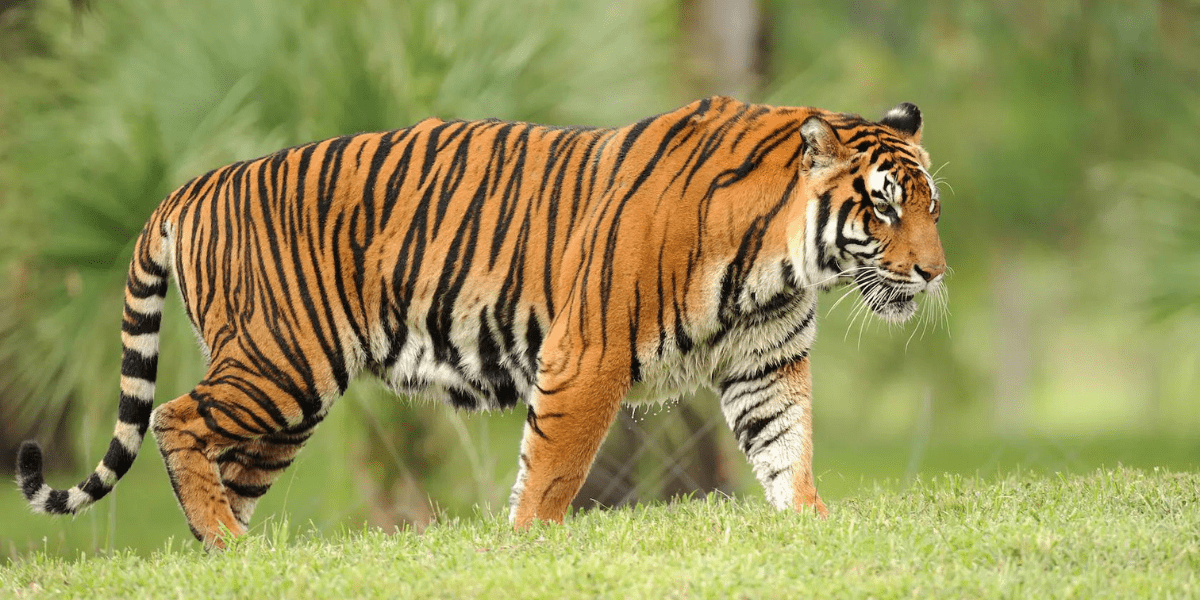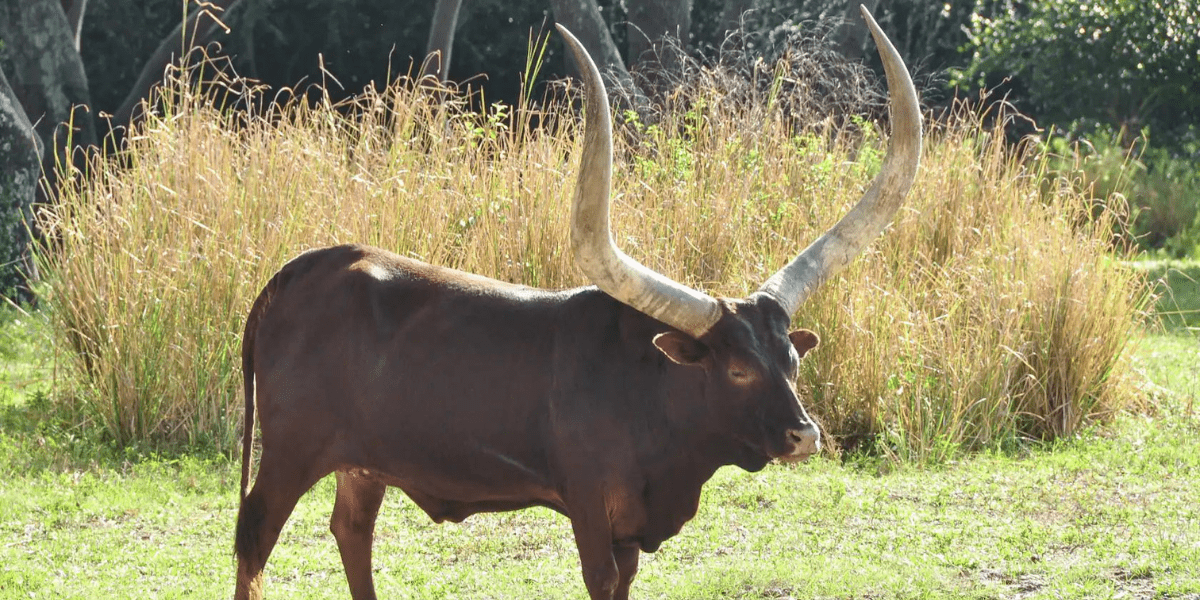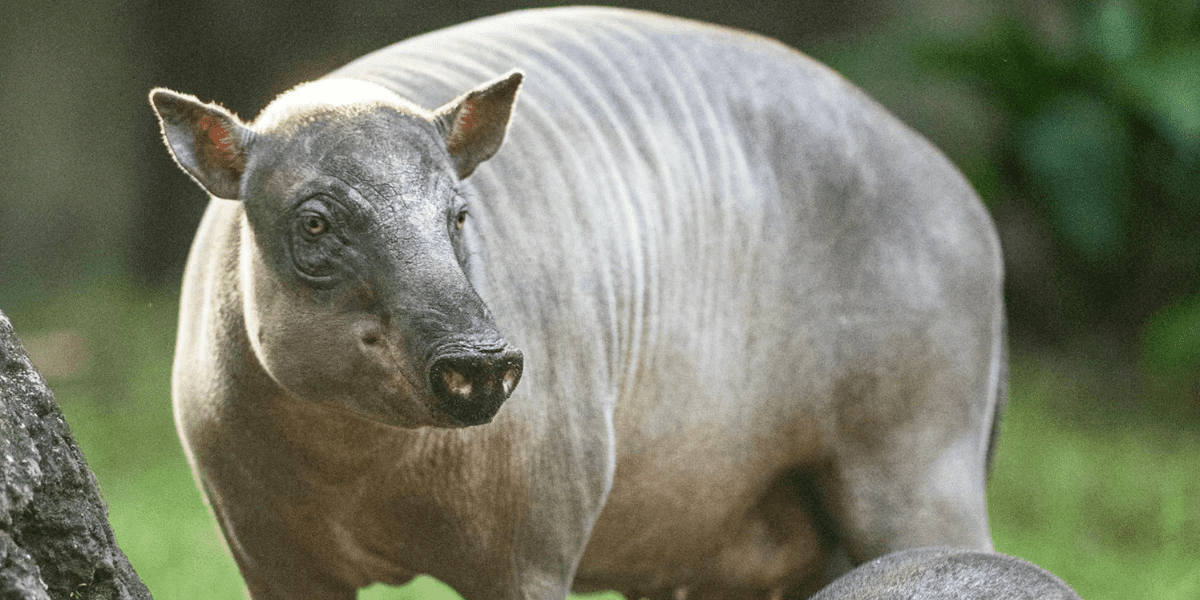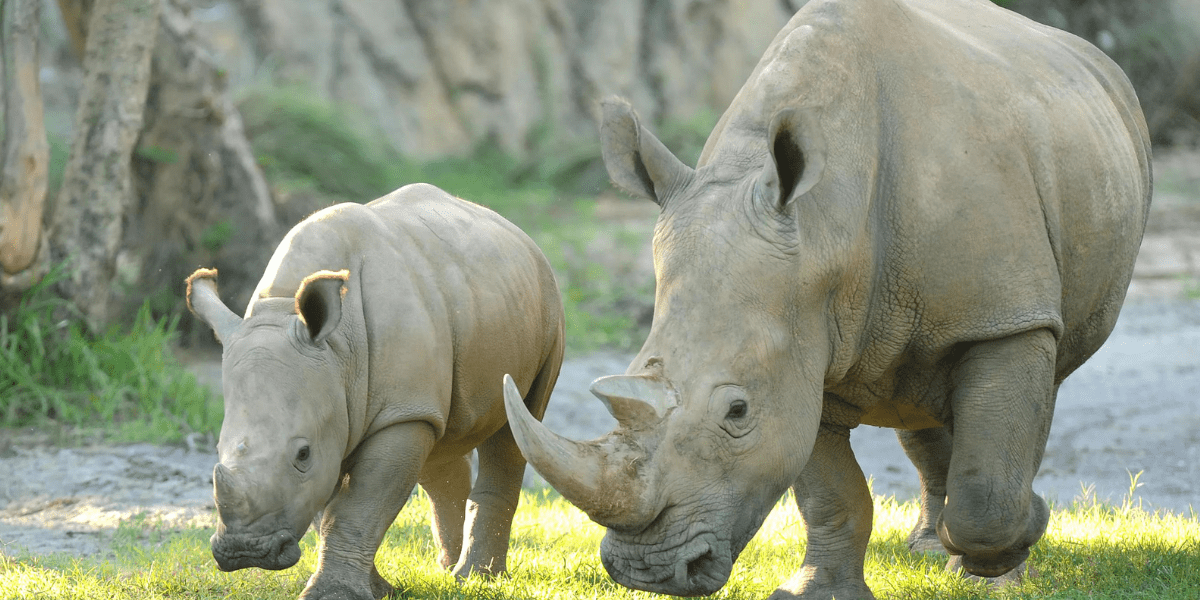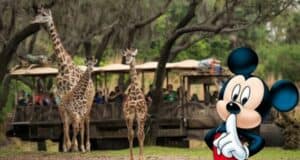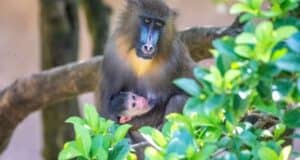
Disney’s Animal Kingdom Park opened at Walt Disney World Resort 25 years ago. While operating as a fully functioning theme park, it also doubles as a renowned, accredited zoological park. The Park is the host home to thousands of diverse animal residents, and so many of the creatures here are rare and unique sights to behold. From those that are threatened or even critically endangered to others that are less profuse throughout other zoological park locations, here’s a look at 10 unique animals you can see at Disney’s Animal Kingdom Park.
RELATED: Here’s What You’re Missing If You Think Disney’s Animal Kingdom Is a Half-Day Park
Sumatran Tigers
The critically endangered Sumatran tiger is just one of the many rarer creatures to make its home on the grounds of Disney’s Animal Kingdom Park. Found naturally on the island of Sumatra in Indonesia, this is the smallest surviving tiger subspecies and the only one still inhabiting the Sunda Islands, where Bali and Javan tigers are already extinct. You can glimpse this unique tiger along the Maharajah Jungle Trek, where it thrives in a recreated habitat on exhibit.
RELATED: PHOTOS: Sohni the Tiger Celebrates Her 11th Birthday at Disney’s Animal Kingdom
Western Lowland Gorillas
Gorillas are generally known for being the largest of the great apes. The western lowland gorilla, however, is the smallest of the subspecies. Native to the Congo Basin, they are currently listed as one of two critically endangered western gorilla subspecies. But Disney is making great strides in helping the overall situation involving gorillas. In the Democratic Republic of Congo, support from the Disney Conservation Fund has even helped the Dian Fossey Gorilla Fund International to open the Gorilla Rehabilitation and Conservation Education Center (GRACE). As for those gorillas residing in the Park, they’re certainly living the good life in their recreated habitats, which you can witness for yourself along the Gorilla Falls Expedition Trail.
RELATED: Awesome Facts About Disney’s Worldwide Conservation Fund
Ankole Cattle
It’s certainly a sight to behold when you first see this modern-day descendent of an ancient cattle breed that once resided within the Nile River Valley circa 4,000 B.C. They are most distinguishable by their massive horns, which can span up to six feet long, tip to tip. Yet surprisingly, these horns aren’t as heavy as they look. That’s because they are really made up of a honeycomb, lightweight consistency, which allows blood to flow through and cool down, resulting in an overall body temperature cooling process.
You can spot Ankole cattle while riding along on Kilimanjaro Safaris or if you opt for the Wild Africa Trek or Savor the Savanna tours. They also make their home on Disney’s Animal Kingdom Lodge grounds.
Eld’s Deer
Along the Maharajah Jungle Trek, you can view another unique sight. It’s the graceful Eld’s deer. An endangered deer species, native to Southeast Asia, the Eld’s Deer is alternately known as the thamin or brow-antlered deer.
Komodo Dragons
The Maharajah Jungle Trek is also home to a massive reptile of impressive proportions. Averaging about eight feet long, Komodo monitors (better known as Komodo dragons) are the largest and heaviest living lizards in the world. Currently classified as endangered on the International Union for Conservation of Nature (IUCN) Red List, Komodo dragons can only be found on five of the Lesser Sunda Islands of Indonesia, including Komodo, of course.
RELATED: Beloved Animal Kingdom Experience Quietly Returns
Bongos
You may spot a couple of bongos while riding Kilimanjaro Safaris. No, I’m not talking about some musical instrument, but rather that near-threatened, primarily nocturnal antelope species native to sub-Saharan Africa. Bongos boast several distinguishable features, including their rust-colored coats, black and white markings, and yellow stripes. But again, it’s the pair of long, slightly spiraled horns they all sport that really catches the eye. And let it be known that both males and females have horns.
Babirusas
You have several opportunities to see pigs at Disney’s Animal Kingdom. You can spot warthogs, along Kilimanjaro Safaris and KuneKune pigs onsite at the Affection Section of Rafiki’s Planet Watch, but have you heard about the Park’s resident babirusas? Native to the swamps and rainforests of Indonesia, babirusas are currently listed as threatened by the IUCN. Their most defining physical features include their snouts and the massive white tusks characteristic of the males. These have the capacity to grow close to 17 inches and resemble antlers, which is one of the reasons why they are referred to as “pig deer” in the Malay language. You’ll find babirusas at home within the Park’s Oasis Exhibits.
RELATED: PHOTOS: 1st Birthday Celebration for Nutmeg, the Babirusa Piglet, in Disney’s Animal Kingdom
Cotton-Top Tamarins
Discovery Island serves as the resident location of these small South American monkeys. Despite weighing just one pound roughly, cotton-top tamarins can leap 15 feet through trees and branches, where they typically live in the forests of northwestern Columbia. They are a critically endangered primate species due to deforestation and illegal pet trade practices.
RELATED: Here’s Why ‘Overpaying’ for Disney Products Actually Does Good
Okapis
Another endangered creature that’s sure to get your attention at Disney’s Animal Kingdom is the okapi. Alternately known as the forest giraffe, Congolese giraffe, and zebra giraffe, okapis hail from the northeastern regions of the Democratic Republic of the Congo in central Africa. While they may resemble zebras, they are actually closer related to the giraffe. On another exciting note, this is the only animal species from the genus Okapia. You can see okapis along the Gorilla Falls Exploration Trail and while riding along with Kilimanjaro Safaris.
Black and White Rhinos
The Animal Kingdom is home to many well-known pachyderms, including elephants, hippos, and rhinos. While all are unique, it’s worth mentioning that their black rhino residents are among some of the only existing species currently left on this planet. That’s because they are critically endangered, with four out of seven types of black rhinos now extinct in the wild. But Disney is working to fix that while also getting a handle on growing white rhino concerns, which are gearing toward a near-threatened status.
Onlookers often wonder why black and white rhinos alike all appear gray in color. In short, the naming is not related to their hues, but is instead the result of an English mispronunciation of the Dutch word “wijd” which translates to “wide.” The real differentiation between black and white rhinos rests in the shape of their mouths.
You can spot Disney rhinos along the Wild Africa Trek and Kilimanjaro Safaris. There is also an additional behind-the-scenes experience—Up Close with Rhinos, which you can partake of at an additional fee.
RELATED: Baby Rhino Introduced to His Brother on Kilimanjaro Safari
All of the creatures throughout Disney’s Animal Kingdom Park are unique in their own right. And the same rings true of all the other furry, feathered, scaly, and fluttering friends to be found throughout Walt Disney World Resort. Each and every single one is worthy of the utmost appreciation and respect.

 DisneyTips.com Your Guide To A Great Disney Vacation
DisneyTips.com Your Guide To A Great Disney Vacation
